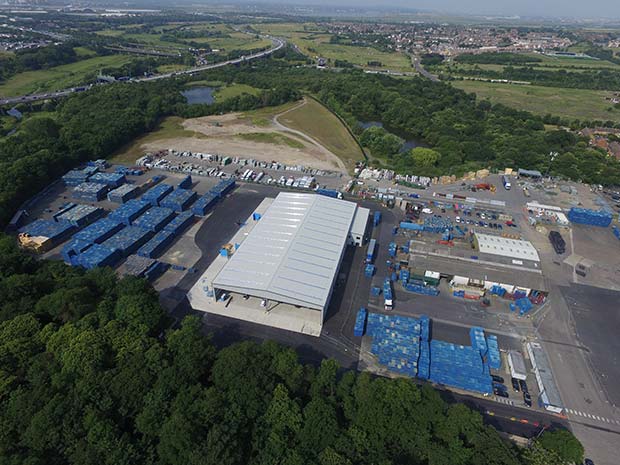CHEP UK & Ireland, the supply chain solutions company, has opened a new state-of-the-art pallet repair and service centre facility in South Ockendon, near Thurrock, in Essex, United Kingdom. The new facility stands on the existing CHEP site and delivers increased availability for the growing pallet demand from customers in the South-East region.
 CHEP has invested more than £2 million in equipping the facility with some of the most advanced automatic fault-detection and repair equipment available. In response to the rapidly evolving needs of its extensive customer base, the new automation equipment will deliver significant efficiency and productivity improvements. This investment in automation will enable a higher level of consistency in pallet quality with the added benefit of improved levels of platform consistency and appearance for all customers.
CHEP has invested more than £2 million in equipping the facility with some of the most advanced automatic fault-detection and repair equipment available. In response to the rapidly evolving needs of its extensive customer base, the new automation equipment will deliver significant efficiency and productivity improvements. This investment in automation will enable a higher level of consistency in pallet quality with the added benefit of improved levels of platform consistency and appearance for all customers.
CHEP UK & Ireland, Vice-President and Country General Manager, Helen Lane, said: “The key areas where the automation will deliver these productivity and efficiency improvements are inspection, repair and paint stencilling. Customers will benefit from improved levels of platform consistency delivered by this increased automation and reduced manual intervention required in the conventional inspect and repair process. Additionally, the South Ockendon site is in the ideal location to effectively manage the large number of satellite pallet processing operations installed for customers on their sites in the South of England.”
The newly-installed automated equipment includes:
> The latest laser system that checks individual pallets for damage, and works in conjunction with an automatic cutter to identify and remove any broken elements.
> A robotic arm lifts the pallet and based on information provided by the Automatic Digital Inspection system (ADI), cuts and removes the element to be replaced then returns the pallet to the repair bench where the operator completes the operation.
> The latest roller nailer technology guarantees no nails protrude more than 3mm above the top board of any pallets.
> Moisture content of pallets can also be monitored thanks to technology which probes the top deck of pallets. If the moisture content exceeds a certain level, the pallet will be removed from production.
As a result of this automation, it is expected that the new facility will be 50% more productive than previously, with the ability to process approximately 6.2 million pallets per year, compared with 4.1 million pallets at the original facility. Both B1210A standard and B1208A Euro pallets will be handled, with the flexibility to switch products in response to changes in customer demand. Staffing at the new facility will remain the same as previously with approximately 85 full-time CHEP employees.
Tony Bavidge, Returnable Asset Manager, Arla Foods, said: “We know CHEP has the size and scale to cope with our fluctuations in demand. As our business continues to grow it’s great to see that CHEP is also planning for the future by ensuring greater volume demand is never an issue for their customers. That’s what you call forward thinking.”
The decision to invest in South Ockendon, and upgrade the existing site has been based on the company’s most recent Plant Network Optimisation (PNO) study which analyses all existing customer flows, returns and issues, cross referenced against the existing service centre network to determine the most efficient locations. This latest study revealed that the existing site at South Ockendon required modernisation in order to deliver greater volume for local customers, improve pallet relocations to the near continent, offer more direct deliveries, as well as improve product quality, consistency and customer service.
As part of CHEP’s ongoing commitment to reduce its impact on the environment, the new Service Centre also incorporates advanced sustainable solutions such as rain water harvesting for the pallet washing area, the installation of LED lighting and improvements in waste segregation. The uplift in volume and productivity at the new plant will generate further network efficiencies, with a potential to eliminate over 800,000 truck kms/year and the associated CO2 emissions in the coming years.
CHEP




Comments are closed.